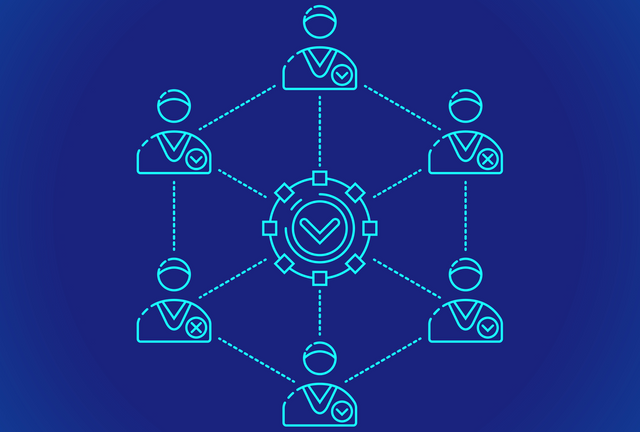Different types of Consensus Mechanisms - Steemit Crypto Academy Season 5 - Homework Post for Task 6.


QUESTIONS
A. WHAT IS THE DIFFERENCE BETWEEN POW & POS?
B. ADVANTAGES AND DISADVANTAGES?
C. WHICH ONE IS BETTER IN SCALING CAPACITY?

Inorder to be able to understand the whole concept, i will be starting by explaining what consensus mechanism is.

CONSENSUS MECHANISM
Consensus mechanism is any number of methods that are being used in achieving agreement, trust and security across decentralized computer networks. Since public blockchains operate as decentralized and self-regulating systems, they work on a global scale without any single authority. These involves contribution of as many as hundreds of thousands of people who work on both the verification and authentication of transactions occurring on the blockchain.
Consensus mechanisms also known as consensus protocols or algorithms allow distributed systems i. e. networks of computers to work together and stay secure.
This basically gives us the guarantee that the nodes are sychronised and transactions are legitimate. An agreement is reached by more than half of the nodes in a system. It is communal in nature since no one takes the decision alone like in the case of a centralized system.
Summarily, the consensus mechanism helps to maintain the security, transparency and free flow of the blockchain activity.
There are different type of consensus mechanism
- PoW
- PoS
- DpoS
- PoB e.t. c

Source
The task requires us to look at just the Proof of work and Proof of stake.
PROOF OF WORK(PoW)

Source
PoW is the acronym for proof of work. Proof of work can also be regarded as proof of work mechanism. This is an algorithm which securess many cryptocurrencies such as bitcoin and etherium. Proof of work describes a system which requires a non-significant but feasible amount of energy and effort which is channeled into the mining of blocks. It is called a proof of work because miners actually needs to proof that they did the work. Miners solves some complex mathematical problems using some hash funtion before a block is successfully mined. Miners provides what is being required to keep the blockchain running especially the energy and computers needed. The are also known to be the watchmen of the blockchain who prevents hackers from invading the system. It is important to say that one of the prominent cryptocurrency that uses the proof of work mechanism is Bitcoin.
PROOF OF STAKE(PoS)
.jpeg)
Source
PoS is a system that rewards miners who are called validators in the consensus mechanism. Their work is not necessarily the computer works that are being carried out by the miner, their’s is based on their level of holding in the blockchain. In this type of consensus mechanisms, the larger the holding of a miner is the more he is likely to be opportuned to mine the next block. So the highest holder naturally gets the highest probablily on being able to mine the next block. Proof of stake mechanism also uses random algorithm to form it’s consensus and this won’t take aways the privilege of highest holders since other considerations are made before the selection.

A. WHAT IS THE DIFFERENCE BETWEEN POW & POS?

| PoW | PoS |
|---|---|
| This types of consensus mechanism consumes more power during the mining process | consumes less power in validation process |
| There is competition in the algorithm among miners | There is no competition as validators are hosen based on their level of staking |
| The reward goes to the first to solve a mathematical puzzle called cryptograph | Rewards are being given in form of fee to validators |
| Block is mined based on energy and volume of work done | The validation of block solely depends on how high the amount a validator is holding |
| The equipments used for mining are very expensive | expensive equipments are not required to become a validator |
| Examples of crypto with proof of work are the popular eth and bitcoin | Examples of crypto with proof of stake are EOS, tezos(XTZ), cosmos(ATOM), lisk(LSK) and cardona(ADA). |

B. ADVANTAGES AND DISADVANTAGES?

PROOF OF WORK(PoW)
| Advantages | Disadvantages |
|---|---|
| As seen in the case of bitcoin, it has been proven to be very sustainable | It requires the use of a lot of energy to keep the system running. |
| When compared to PoS, PoW is very easy to set up | It is very expensive to set up. |
| You don’t need big tokens like etherium to start off unlike PoS | There is the need of sophisticated equipment to begin your journey as a miner |
| Third party are eliminated in theis system which makes them decentralized | The prevailing need for the use of computation might make the system centralized on the long run. |
| It is very rewarding after you have been able to set it up regardlessly of the starting cost | Only few can operate as a miner unlike validators because of its cost. |
| PoW helps reduce the problem of double spending and other issues | When related to PoS, transaction cost is high. |

PROOF OF STAKE(PoS)
| Advantages | Disadvantages |
|---|---|
| Unlike proof of work, it doesn’t involve solving complex mathematical problems and puzzle | The coins or tokens you stake are not easily accessible until a period of time after being locked. |
| There is basically no competition in proof of stake system | Investors with the hightest stakes has certain right but could be detrimental sometimes. |
| There are no miners in this system, only validators who doesn’t need to work their fingers | The rewards gotten in the proof of stake system are ussually lower when compared to that of a miner. |
| Proof of stake mechanism has a very strong basis against become a centralized system over time that the proof of work mechanism | Since it is still at its early stage, we cannot confidently tell how relevant it will become in the future |
| It is very much easier to stake when compared to mining | In most cases, it is not very easy to implement |
| It has a high and appreciated scalability and security level | Users needs a certain amount of token to start off as validators |

C. WHICH ONE IS BETTER IN SCALING CAPACITY?

Scaling capacity is the ability of a consensus mechanism to complete numerous or a lot of transactions in a very short time. Owing to the comparison and contrastion made between the proof of work(PoW) and proof of brain(PoB) so far, it can be deducted that the proof of stake(PoS) is more efficient in carrying out numerous transactions. This is because of the fact that it’s comfirmation process is way more seemly and appropriate when compared to the proof of work mechanism.
Etherium which is one of the leading cryptocurrency uses the proof of work mechanismms and it validates about thirteen(13) transactions per second.
An example of the cryptocurrency which uses the proof of stake mechanism is Solana(SOL) process tens of thousands of transactions per seconds. This is also done with a very cheap transaction fee.
This two examples serves as an analysis which support that the proof of stake(PoS) mechanism is highly scalable and more prefered.

CONCLUSION

Reading and making more research on the subject have been really worth while as it is both enjoyable and imparting.
Thank you so much for this lesson. Best regards, @steemtopus
Cc
@dilchamo